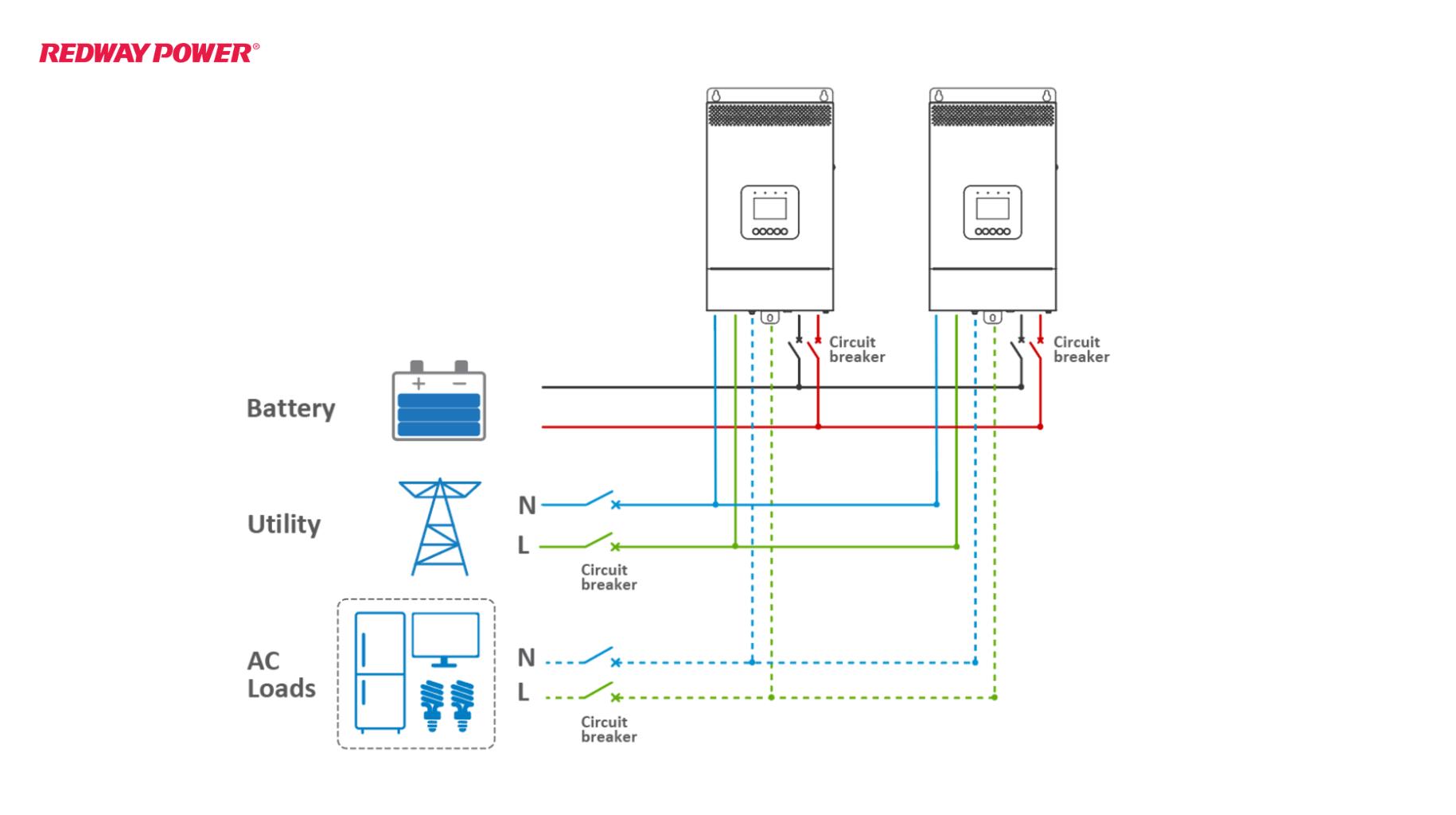Connecting two solar inverters in parallel is a common practice that allows for increased power output and flexibility in solar energy systems. This configuration enables the combined output of multiple inverters to meet higher energy demands, making it ideal for larger installations or systems requiring redundancy.
Benefits of Connecting Inverters in Parallel
There are several advantages to connecting solar inverters in parallel:
- Increased Power Output: By combining the outputs of two or more inverters, you can significantly boost the overall power capacity of your solar system.
- Redundancy: If one inverter fails, the other can continue to operate, ensuring that your system remains functional.
- Scalability: This setup allows for easy expansion; you can add more inverters as energy needs grow without replacing existing equipment.
| Benefit | Description |
|---|---|
| Increased Capacity | Allows for higher total output from the system |
| Redundancy | Provides backup power if one inverter fails |
| Scalability | Facilitates future expansion of the solar system |
Key Considerations for Parallel Connections
Compatibility and Synchronization
Not all inverters are designed to be connected in parallel. It is essential to ensure that both inverters are compatible and have synchronization capabilities, which means they can operate together without causing waveform interference.
| Requirement | Description |
|---|---|
| Same Model/Brand | Ideally, use the same model and brand for compatibility |
| Synchronization | Must be capable of producing synchronized outputs |
Wiring and Safety Requirements
Proper wiring is critical when connecting two solar inverters in parallel. Ensure that all connections are secure and follow safety guidelines to prevent electrical hazards.
- Use Appropriate Gauge Wire: Select wire that can handle the combined current output.
- Fuses and Breakers: Install fuses or circuit breakers to protect against overloads.
Step-by-Step Guide to Connecting Two Inverters in Parallel
- Gather Necessary Equipment:
- Two compatible solar inverters.
- Appropriate wiring (gauge based on current).
- Fuses or circuit breakers.
- Install the Inverters:
- Place both inverters close together and ensure they are properly mounted according to manufacturer specifications.
- Connect DC Inputs:
- Connect the positive terminals of both inverters to the positive terminal of the solar array.
- Connect the negative terminals similarly.
- Connect AC Outputs:
- Use a common AC bus or distribution panel to connect the AC outputs of both inverters.
- Configure Settings:
- Access each inverter’s settings and set them to operate in parallel mode if required by the manufacturer.
- Test the System:
- Once connected, monitor the system’s performance to ensure both inverters are functioning correctly.
Troubleshooting Common Issues
If you encounter problems after connecting two solar inverters, consider these troubleshooting steps:
- Check Connections: Ensure all wiring is secure and correctly configured.
- Monitor Output: Use a multimeter or monitoring software to check that both inverters are producing power as expected.
- Consult Manufacturer Guidelines: Refer back to the installation manuals for specific troubleshooting tips related to your inverter models.
Best Practices for Maintaining Parallel Connections
To ensure optimal performance from your parallel-connected solar inverters:
- Regular Maintenance Checks: Periodically inspect connections and wiring for wear or damage.
- Monitor Performance Metrics: Keep track of voltage, current, and overall system performance using monitoring tools.
- Stay Updated with Firmware: Ensure that your inverter firmware is up-to-date, as manufacturers may release updates that improve performance or fix bugs.
Latest News in Solar Technology
Recent advancements have focused on improving inverter technology, including better efficiency ratings and enhanced capabilities for parallel connections. New models now offer integrated monitoring systems that allow users to track performance metrics remotely, making it easier to manage larger solar installations effectively.
Expert Insights
“Connecting multiple solar inverters can significantly enhance your system’s capacity and reliability,” says a renewable energy expert. “However, it’s crucial to ensure compatibility and follow safety guidelines during installation.”
FAQ Section
Q1: Can any two solar inverters be connected in parallel?
A1: No, only compatible models designed for parallel operation should be used together.Q2: What happens if I connect incompatible inverters?
A2: Connecting incompatible inverters can lead to waveform interference, reduced efficiency, or even damage.Q3: Do I need special equipment to connect two solar inverters?
A3: You may need additional wiring, fuses, or a parallel kit depending on your inverter models.
Know more:
2 solar inverters in parallel
how to connect 2 inverters in parallel
connecting inverters in parallel




